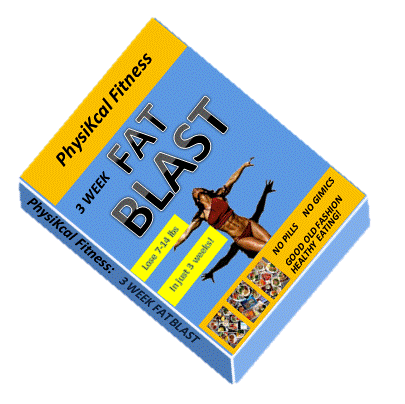top of page

EDUCATION ZONE
Have a question or want to know more about a particular topic. Why not ask a question? We will try do write an article a week based on questions from our audience.
INJURIES
Nick Wachter
Personal Trainer & Conditioning Coach
PhysiKcal Fitness; Feb 27th 2013
Injuries - The Basics
If you are injured it can be frustrating, but it can also be an opportunity. Injuries should force you to rest that muscle/group of muscles allowing you more time for a social life or more time to concentrate on other parts of your exercise regime. for example a broken foot should mean a lot more upper body strength and muscle gains. A broken hand means more time to get fit and work on your midsection.
Large injuries aside many people have smaller injuries or niggles. These can often be more serious and last longer than the clean broken bones. Firstly its important to realise injuries are a part of life and a part of exercise. At least for most people. This is because most people set ambitious goals with regards to how quickly they want to get fit, strong or look good. ie a lot of training! Ideally we would give ourselves more time to reach our goals and thus reduce the risk of injury. Each injury and how you deal with it will depends on your:
-
Goals
-
Fitness levels
-
Severity of the injury
as well as other factors.
TYPES OF INJURY
KNOCKS - When you take a knock you likely damage the muscle fibres. these fibres take time to repair and become very imflammed. Normally a few days or a week of rest and as the swelling goes down you will be back to normal. Rest, Ice, Compression & Elevation
TWISTS - As with knocks most twist result in direct muscle fibre damage and nothing else. RICE for a day or two and rest and you will be back to normal.
MUSCLE PULLS - A very common injury is pulling or tearing the muscle. Thsi normally happens to a very small percentage of your muscle fibres within a muscle. However, it can still be very painfull and effect performance. A complete tear will snap a muscle clean in two, however this is very rare. More common are grade 2 (severe tear that damages a significant proportion of the muscle fibres) and grade 1 (the most common tear that only effect a small proportion of the muscle 1-10%).
Most people will know the sharp pain and the limp to the side to stretch the painfull muscle when they first start exercising. thats a muscle tear! When your muscles are sore a few days after trainings (DOMS delayed Onset Muscle Soreness) these are technically lots of tears to the muscle. this promotes new and thicker fibres. The more sore they are the more tears you have. This is the reason when you start back training you ache like hell everywhere (lots of tears everywhere) compared to 6 months down the line where you have to kill yourself just to get a decent ache.
For large muscles pulls RICE
For smaller pulls rest it for a day or two then perform some light conitnuous exercise, such as the rower, x trainer. Keep it on an easy level to start and gradually move it up to average. Using the muscle lightly and controlled will allow blod flow to increase to the area and also break up damaged fibres and clotting agents. This should be 20-50% effort and not performed if painfull.
With DOMS it is going to hurt. Use the muscles in different ways and gradually increase the range of motion and intenisty of the exercise. You will feel a lot better after it.
TENDONITIS - Damaging the tendon (the bit that attaches your muscle to the bone) can be painful and painless. A straight tear due to force will be extremely painful and will require the RICE protocol. Gradually tears over time may not be felt at all, until the tear becomes large or inflammed enough to interfer with the normal working motion of the joint. This is known as tenonitis. Tendonitis can flare up being bad on some days or during some activities and better on others. The key is to manage the inflammation and allow the tendon to heal. Ideally resting it for two weeks.
The problems with tendons is that they're hard to rest while at work or home. At the gym its easy, simply avoid the exercises that hurt or avoid over straining the muscles. Of course this can be done by yourself or by a professional
SPRAINS - Sprains are severe twists, damaging more than the muscle, effecting the ligament. if you have sprained a joint you will be in extreme amounts of pain and most people will goto hospital. Minor sprains can be very painful but short lived, meaning no hospital requirement. The sooner you can get ice ont he joint and anti inflammatories into you the better. These prevent large amounts of bruising and swelling, resulting in less pain over the following days.
IF IT HURTS STOP USING IT
Or at least stop using it hard. Drop the weights, or reduce thespeed and time you are running for. Most injuries (such as tendonitis or muscle pulls) will repair themselves quickly if you reduce the stress on them. If need be give them time off completely (as in the case of a broken hand).
I often see people with painful shoulders (rotata cuff injuries) or painfull shins (medial tibial stress syndrome) or bad elbows (tendonitis) and they tell me it hurts when i lift. Only to find out theyre trying to lift the same weight as previous. You injury may not get worse, but it certainly wont get better. Eliminating one or two exercises that cause the most stress or reducing the weight, speed and amount you do can help greatly.
If its an ongoing niggle, lasting 6 weeks or more there may well be underlying problems. Weakness or imbalance in muscles or flexibility issues. Try doing a pilates or yoga class (or stretching & working on stabalising muscles if you dont like group exercise). 6 weeks of improving flexibility and joint stabilisation, with just 2 sessions a week can make a huge difference to the next year or two of your training. As well as give your injury time to rest.
Over the next few weeks we will be giving general advice on specific injuries but the same rules apply.
-
How bad is the injury
-
Do you need to rest completely or reduce the intenisty/duration
-
Do you need to eliminate the more stressfull exercises
-
What can you focus on while your body is recovering
If you are resting because of an injury that doesnt mean you have to train less or not as hard. If you hurt your hand you can push your legs and fitness to the limit, working the rest of your body while allowing the injury to rest.
WHAT TO DO IF YOU HAVE A NIGGLE
-
See a sports massuesse/personal trainer (make sure theyre the best in the field, highly qualified and experienced)
-
See a physio therapist (Your trainer masseuesse will often recomend this if the injury is more serious)
-
Go to the doctor to be refered to a specialist





ALWAYS SEEK PROFESSION/MEDICAL HELP BEFORE STARTING OR CHANGING ANY EXERCISE REGIME.
bottom of page








